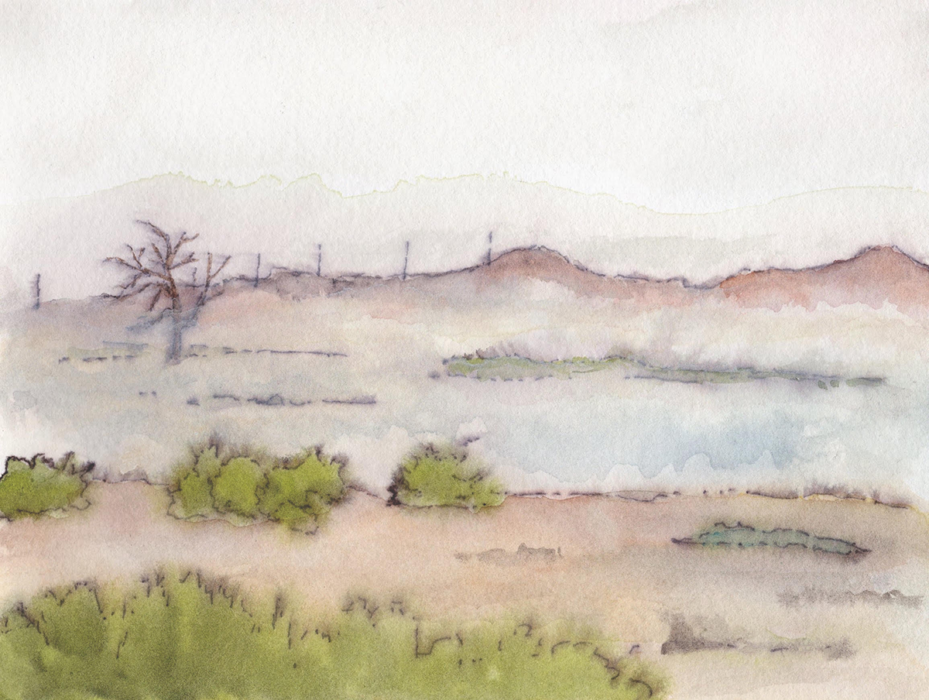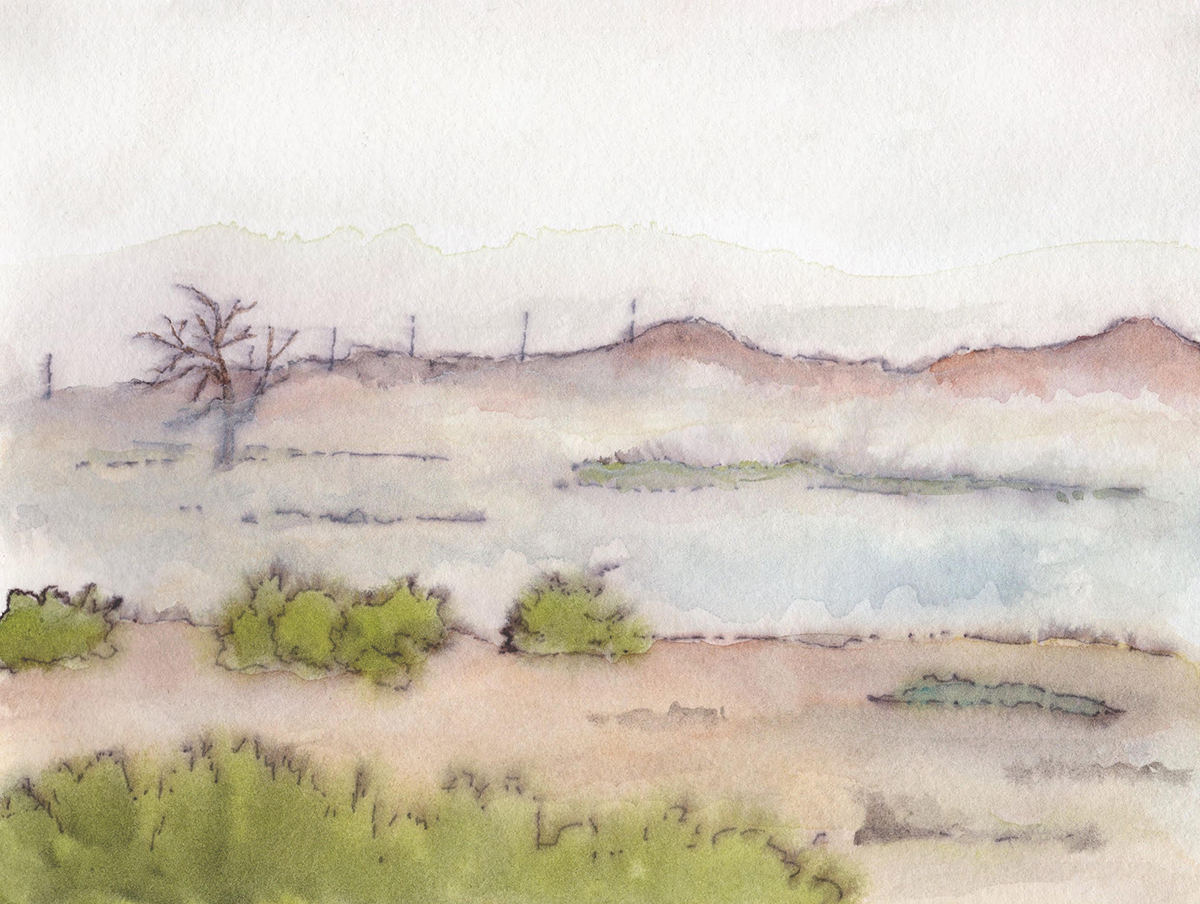
Matt Dessert does not want to sue San Diego, nor does he want to start a legal battle with the state of California. But the growing threat to Imperial County’s air quality may leave Dessert, an officer with the county Air Pollution Control District, with little choice.
In May, an Imperial County resident captured dramatic evidence of the air quality issue around the Salton Sea, an inland saline lake in this southern California county, as he drove through a massive dust storm. When the dust clears enough to allow a view of anything but the vehicle’s headlights, the video shows scenes that look like they belong in a post-apocalyptic Netflix special — lines of abandoned picnic tables and lakeside trailheads consumed by blowing dust and dunes. The video, and growing frustration with California’s approach to the fast-drying lake, eventually triggered a county declaration of emergency on October 22.
The Salton Sea has been shrinking since 2003, when the Imperial Irrigation District agreed to send water about 100 miles west to San Diego; the annual amount ramps up to 200,000 acre-feet in 2021. Agricultural runoff was the primary source of Salton Sea water, so California planned to funnel part of its Colorado River share into the inland sea to compensate for the transfer. In January 2018, the state stopped trying to fill the lake with Colorado River water and promised new forms of dust mitigation.
But the dust has defied attempts thus far to control it, Dessert said. Unless state officials come up with a solution soon, he said he’ll consider legal action.
What’s happening here may be a regional precursor. With dozens of dead and dying lakes releasing dust all around the West, this source of pollution poses a threat to human health and, possibly, to ecosystems across the globe.
In the last 200 years, the amount of dust blowing around the West has increased some 500 percent, according to Janice Brahney, an assistant professor who studies dust and watersheds at Utah State University. The movement of dust has only increased in recent years, jumping 300 percent in the last two decades alone. The dust comes from a variety of sources: industrial activities, construction, even off-road recreation. But a good chunk of it comes from the erosion of “playa” — the dry flatlands left behind when lakes or wetlands like the Salton Sea dry up.
There are about 22,000 acres of playa surrounding the Salton Sea, according to Katie Burnworth, an air quality special projects coordinator for Imperial County. But the lake’s decline isn’t expected to stabilize until 2047, and by then, she said, some 76,000 acres will be exposed to the region’s frequent winds.
A similar and larger-scale scenario is playing out on Utah’s Great Salt Lake. Exposed playa now constitutes a half million acres of the former lakebed, according to Kevin Perry, an atmospheric scientist at the University of Utah. Fortunately, all but about 9 percent of that area is covered by a natural, protective crust that keeps the dust in place, Perry said. But if something were to disturb the crust or if it erodes over time, dust-producing regions could grow to represent 22 percent of the playa.
Another desiccated California lake serves as a warning. Owens Lake, Perry said, was “about as bad as it can get.” After Los Angeles drained it in the 1920s for its water supply, Owens became the nation’s largest single source of dust. Fortunately, few people lived in the area.
“It’s not like you have a million people living immediately downwind,” Perry said. “If you put Owens Lake in the middle of L.A., it would have been horrendous, the impact on people living there.” That’s the kind of effect a disrupted Great Salt Lake playa could yield.
The desiccation of both the Salton Sea and Great Salt Lake in more populous regions is driving more scientific inquiry into dust’s health and environmental implications, but the research is in its infancy. The impact of lake dust on human health remains unknown; the overall scope of the problem even more so. It’s possible that numerous lakes dried up long before anyone took notice of the dust issue, according to Wayne Wurtsbaugh, a professor emeritus of watershed science at Utah State University.
“The lakes that have risen to prominence, for the most part, are the ones that dried in the last few decades,” Wurtsbaugh said. “There are some big lakes out in Nevada that were dried up a hundred years ago, and people aren’t even talking about them.”
Researchers suspect all this new Western dust could have serious implications for the health of nearby residents, particularly on the Wasatch Front, where some 2 million people are projected to one day live in proximity to the Great Salt Lake. Dust particles themselves are classified as particulate pollutants — tiny granules that irritate the lungs and are linked to asthma, heart attacks, strokes, and even miscarriages. But that’s not the only reason air regulators are concerned about the threat of drying lakes.
Most of these lakes, including the Great Salt Lake, are “terminal” lakes — the end point for river systems that don’t make it to the ocean — which means anything in the surrounding water systems eventually accumulates in the lakebed sediment. So when the lake disappears, the dust that blows off the former lakebed may contain any number of harmful compounds.
Researchers have already detected lead, arsenic, and toxic pesticides in the sediment of the Great Salt Lake, according to Kimberly Hageman, an associate professor of environmental chemistry at Utah State University. What isn’t known, she said, is whether those contaminants blow off the lake in the form of dust, how far they travel, and whether they cause additional harm if inhaled. “You have contaminated sediment that is now getting into the atmosphere,” she said. “What’s happening to that?”
The other concern, Hageman said, is that all this dust could end up deposited in the surrounding mountains, where residents source their drinking water. And these tiny particles can travel even farther — Hageman has detected flame retardants in Arctic dust.
“If the lake weren’t drying up, this wouldn’t be an issue,” said Hageman. “We’d still have contaminated sediment, but they’d be at the bottom of the lake instead of getting into dust and onto mountains.”

